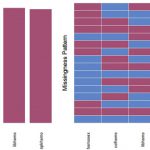January 11 marks National Human Trafficking Awareness Day in the United States. There are an estimated 25 million victims of human trafficking throughout the world. While these individuals may sometimes be kept behind locked doors, they are more often hidden right in front of us. For example, they may be forced into exploitation at construction sites, restaurants, elder care centers, nail salons, agricultural fields, massage parlors, and hotels – even in private homes. Anyone could potentially encounter a possible human trafficking situation, although it may not be obvious.
Traffickers’ use of coercion – such as threats of arrest, deportation, or harm to the victim or a family member – is so powerful that even if you reach out to victims, they may be too fearful to respond or acknowledge what is happening. In cases where traffickers use deception and fraud as tactics, victims may not even be aware of the full scope of what is happening to them. Knowing the indicators of human trafficking may help you recognize possible human trafficking, how to respond safely and appropriately, and most important, how to report it. While not an exhaustive list, you can find some key indicators here.
If you believe you have identified someone in a trafficking situation, you can take action. In an emergency, notify local law enforcement immediately by calling 911 (in ITALY 112). You may also call the National Human Trafficking Hotline, a national 24-hour, toll-free, multilingual anti-trafficking hotline. Call 1-888-373-7888 (in ITALY 800-290-290) to report a potential human trafficking situation or to better understand what human trafficking is and how to respond safely. It may be unsafe for you to attempt to help a trafficking victim directly, and doing so, could place the victim in greater danger.
Should you identify a victim who has escaped his or her trafficking situation and needs help, the National Human Trafficking Hotline can connect you to number of organizations where the victim can receive shelter, medical care, legal assistance, and other critical services. The Hotline can also connect you training and technical assistance opportunities, general information, or specific anti-trafficking resources. The Hotline is equipped to handle calls from all regions of the United States from a wide range of callers including trafficking victims, community members, law enforcement, medical professionals, legal professionals, service providers, researchers, students, and policymakers.
No single person or entity can fight this scourge alone. Anyone can join in the fight against human trafficking.
HUMAN TRAFFICKING INDICATORS:
– Living with employer;
– Poor living conditions;
– Multiple people in cramped space;
– Inability to speak to individual alone;
– Answer appear to be scripted and rehearsed;
– Employer is holding identity documents;
– Signs of physical abuse;
– Submissive or fearful;
– Unpaid or paid very little;
– Under 18 and in prostitution.
Kari Johnstone, Acting Director in the Department of State’s Office to Monitor and Combat Trafficking in Persons.


